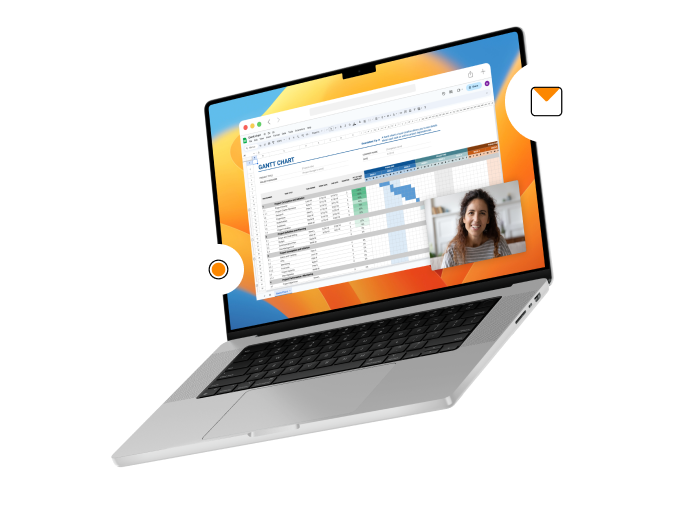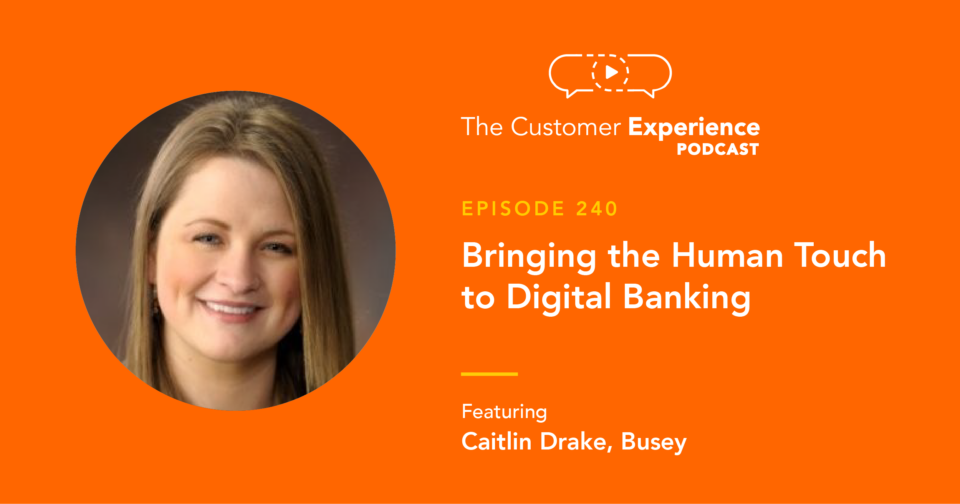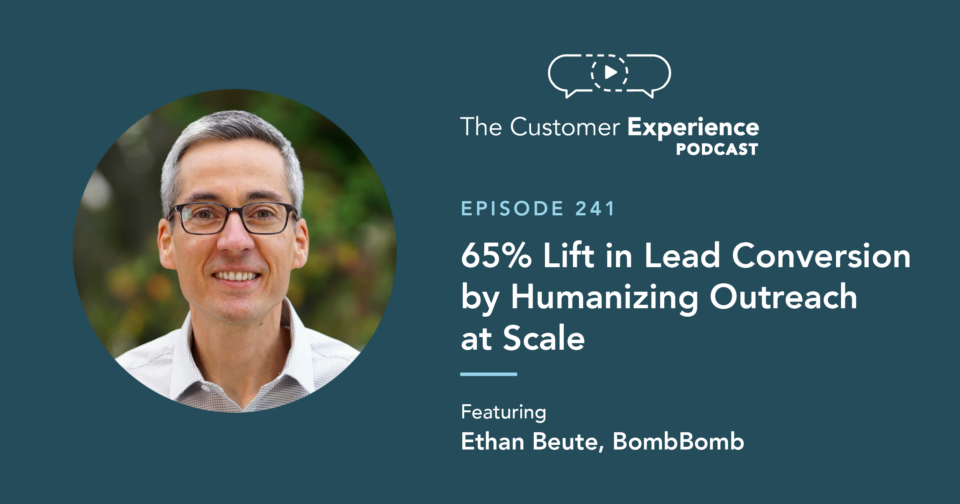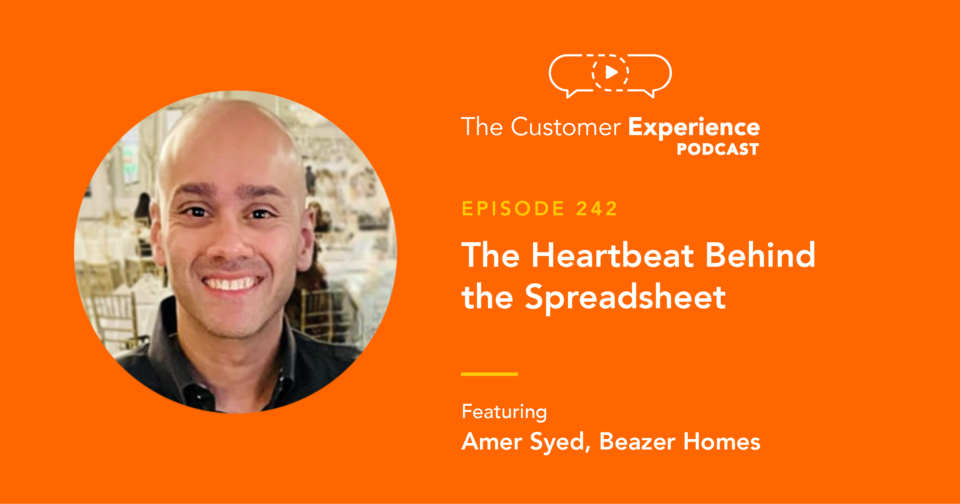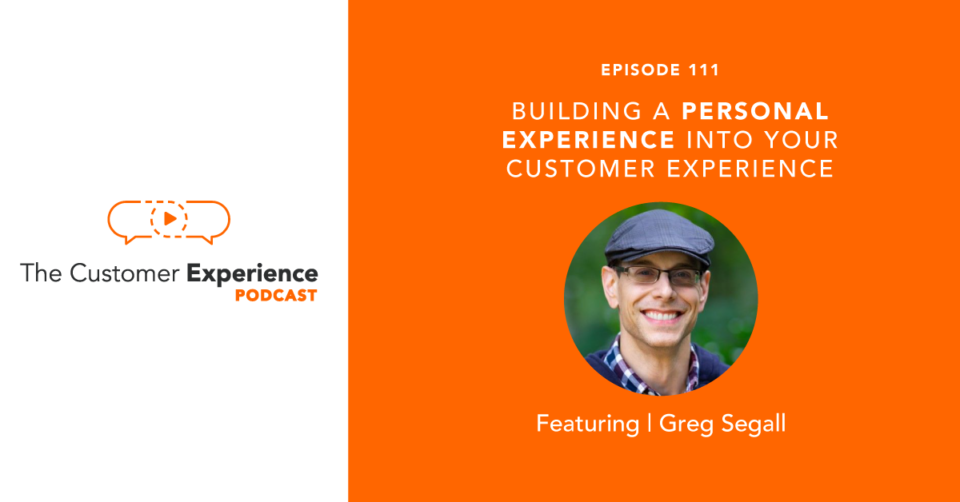
Apple Podcasts | Google Podcasts | Stitcher | Spotify
Customer experience (CX) usually manifests in a one-to-many or a one-to-few relationship style. But personal experience (PX) is CX on a one-to-one basis.
By driving your CX to a one-to-one basis, the deep connections you’re creating with people cultivate trust.
After all, people don’t care about brands. We care about the people behind the brand.
Video is one of the fastest ways to evolve CX into PX. Simple, casual, and conversational videos are better in so many circumstances than plain text. And one of the most basic things that video achieves is a beeline to improved PX.
Today’s guest, Greg Segall, is passionate about using video to create positive PX moments. He believes it’s a catalyst to strengthening personal bonds and thereby driving growth opportunities — as well as stronger adoption, retention, and expansion with customer accounts.
Greg, Founder and CEO of Alyce, enables customers to leverage human-enhanced artificial intelligence to send the perfect gift. He is focused on the difference between personalized and personal, as well as how PX grows trust between people and brands.
In this conversation, Greg shares insights into …
• How CX is defined
• What PX and the 5-to-9 are and why they matter
• What the difference between personalized and personal is
• How to succeed with PX – even at high volume
• Why video is vital for PX
Building a Personal Experience Into Your Customer Experience
Listen to the entire conversation with Greg Segall of Alyce right here:
Take this episode of The Customer Experience Podcast on the go in your preferred podcast app:
When you visit one of those links, please give an extra click to review the show – it’s extremely helpful. And, of course, feel free to subscribe and/or leave a review, too!
Sign up for a monthly email with CX insights and highlights
By entering your email, you are agreeing to receive occasional BombBomb news and communication. We will never sell or distribute your email address to any third party. You can manage your communication preferences here.
View our Privacy Policy.
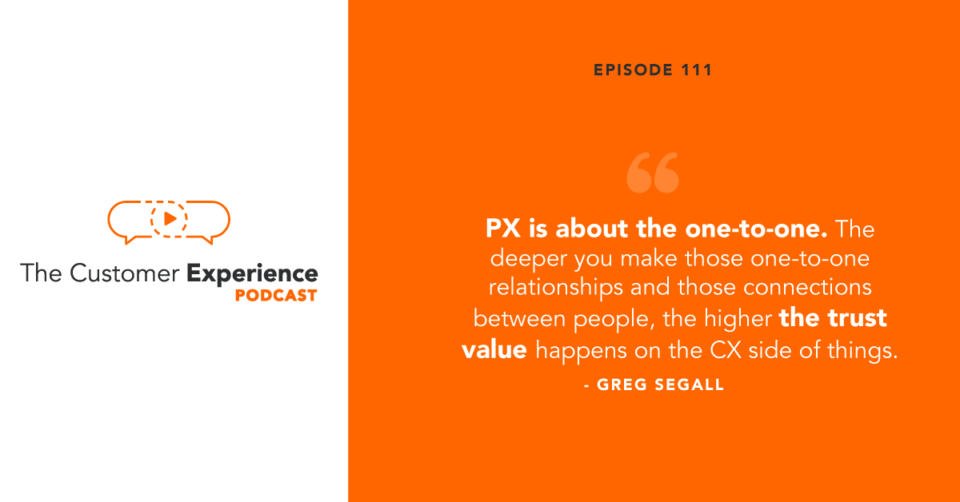
Full Transcript: Building a Personal Experience Into Your Customer Experience
Ethan Beute:
Human-to-human. ROI-focused. Artificially intelligent. These are just a few aspects of the approach that today’s guest is taking to improve customer experience. For him, a great CX is based in PX, “personal experience,” and video can help, by the way. He was CEO and founder of two other companies before becoming CEO and founder of Alyce, whose customers leverage human-enhanced artificial intelligence for gift-giving superpowers to send the perfect gift to their most important prospects, customers, and employees. Greg Segall, welcome to The Customer Experience Podcast.
Greg Segall:
Thanks so much, Ethan. Really excited to be here.
Ethan Beute:
Yeah. I love so many themes going on in this conversation. I’m especially excited to talk video with you, which we do sometimes on this show, but not as often as I would like to. But I want to start with: You’re a Boston guy, you founded three companies in the Boston area, and the interesting thing I would love to get a quick drive-by on is, you seem like a tech guy. You’ve started e-commerce and of course now a personal experience artificially intelligent company. But your background is a BFA from BU, so you’ve done design, graphic design, art history, fine art. How has that informed your direction? What has that done for you, not necessarily professionally, but personally?
Greg Segall:
Well, it’s funny. I always was an art major, so I always had three loves growing up. It was always: art, music, and baseball. Those are the three key things in my 5-to-9, which we’ll obviously get to here as well. The art side of things was a really interesting start because it taught you a lot about sort of like how to look at things in many different ways. And also what was interesting about art, too, especially once I got into more of the design side, was actually figuring out how to use your critiquing so that the teachers would critique you and it was actually like teaching how to sell. Because you actually have to sell somebody on why are you using the specific color and why is the design really great and stuff, so it was a good, informative start to doing everything; and also because it starts to teach you about usability and starts to teach you about color theory and composition and how to look at things and see things through other lenses than you would not normally see otherwise.
Ethan Beute:
So good. Halfway through your response there, I immediately thought about hitting the road to raise funds for the company, for example, in terms of managing critiques and positioning things, et cetera, and I’m sure your pitch deck looks beautiful. And congratulations, by the way, on all your success with Alyce to date.
Greg Segall:
Yeah. Excellent.
Ethan Beute:
Let’s start where we always start: customer experience. When I say that to you, Greg, what does that mean?
Greg Segall:
Customer experience to me is… It’s funny because I sort of have two different takes on it. One is it’s kind of the ephemeral feeling you have between a brand and a vendor, right? Or a brand and a person. Wherever that consumer is. But typically, the second way I look at it is like it’s an organizational level, in terms of all the moments that you’re actually adding up, in terms of how you feel about the brands, and how you actually start to interact with the brand, and then obviously either buy/purchase, or those feelings that sort of come from that at the end of the day. But it’s really, in my mind, on an org-by-org level or org-to-person level that’s there.
Ethan Beute:
Yeah. Well done. I mean, you really tied a couple of key things there together: (1) the emphasis on feeling, but the idea of feeling to thought to action and behavior, right? So I think that really matters, and thinking about it from an organizational standpoint, of course, is the reason we do the show, so that’s great. So let’s talk PX. Personal experience. What is its relationship… Well, you can define it or tee it up however you’d like, and then maybe talk also, too, about its relationship to CX.
Greg Segall:
Yeah. So just going back to customer experience: If you think about, it’s very much org-to-org. Think of it in B2B. It’s: I’m the vendor and then here’s the actual company that I’m trying to interact with. And the other piece of that, which I didn’t say in terms of customer experiences, it’s every interaction you have between that, that becomes the feeling, but that’s both the people and that’s also the product experience because you’re actually buying that as well. And when you think of that, that’s very much like there’s many people on the vendor side, and there’s many people on the actual brand side or the actual customer side of things. Or in the case of B2B2C, it’s the individual and then your relationship to all the people and all the products that are actually being sold by the actual brand itself.
Greg Segall:
So when we think of PX, it’s basically extrapolating the actual one-to-one relationships that you have in the customer experience. So the customer experience, go back to B2B, is very much made up of: Could be 10 people on the vendor side, it could be 50 people on the customer side of things that you’re selling. And that could be your CS person, your salesperson, your AED, or BDR that’s on there, your procurement person, your finance person. And then on the vendor side, all those individuals that are there, too: the actual consumers of the product itself, the purchasers, the legal team. All those things add up, and what we’re really trying to push on here is there’s this next evolution of how you drive CX to a one-to-one basis.
Greg Segall:
So to me, CX is very much about the many-to-many or the one-to-many type of the thing, and PX is about the one-to-one. And the deeper you make those one-to-one relationships and those connections between people, the higher the trust value happens on the CX side of things. That’s where the feeling becomes amazing, because then I can actually drive towards that. And we can go into many different examples as to how you can take that, including with video, which we can geek out on after this. But that’s the fundamentals of what PX is. It’s the going from persona-to-person. How do you take that mindset of how you sell to somebody and how you actually get to the true Holy Grail of what marketing sales relationships are supposed to be, which is one-to-one?
Ethan Beute:
Love it. I hear kind of some of the lines you drew there. I see, obviously, personal versus personalized. Personal is the human-to-human; personalized is the kind of triggered, maybe one-to-one, but not human-to-human. So maybe walk that out a little bit. Did I hear that correctly? And would you accept the language of what you’re talking about as human-to-human versus… I used to use “one-to-one” for that, right? It was me, Ethan, to you, Greg. That’s one-to-one. But now, I’m starting to use the language “human-to-human,” because one-to-one could be bot-triggered. It could be artificially intelligent triggered. There’s so many ways to do one-to-one that isn’t necessarily human-to-human. So give me anything you got on that.
Greg Segall:
I can go on for days on this one. So the concept… And it’s funny. Before we started off here, we were talking about Stitch Fix. So let’s use that as an example as a brand that does this really well. “Personalized” is the use of data to drive somebody through a buying process to take that action, right? Netflix does this amazingly well. And it’s not even just with the purchase, but it’s like the consumption of the product. How much data they have to be able to predict what the next movies are that you want to actually watch. Amazon does a great job, right? And many e-commerce companies do this, where they say, “Hey, here’s the data that you have, and here’s how I get somebody to actually continue to purchase more.” Like, “Oh, these people bought this with like this,” or whatever it might be. It makes it feel like they know you, but it’s not personal. So that’s personalized.
Greg Segall:
“Personal” goes back to when we were talking about CX, which is about feeling. It’s about the emotional resonance you create with somebody to truly bond on a one-to-one basis. And actually, it’s funny, I used to use “human-to-human” as well, but the problem with “human-to-human” is it really just talks about the activity being done between two people. It’s not talking about the emotional resonance and the bonding that can happen between two people, which is why you use the word “personal.” Personal has emotion connected to it versus being personalized, which is just persona-based in many cases or generalizations. And again, in B2B, it’s much harder because you don’t have that depth of data that a B2C company typically has to be able to truly make it feel like, “Oh, this is a really great buying experience,” or consumption experience that you’re actually going through there.
Greg Segall:
So being personal, and that’s why we call personal experiences instead of personalized experience, is about how do you really do both the relevance of the relationship, like how do you actually show that you’re actually understanding what that person is, and how do you be relatable in terms of that? And that’s where we call that the 5-to-9 versus the 9-to-5, right? If everybody just stays in the 9-to-5, it’s like, “Cool, you’re relevant. You’re telling me about this product you have and the things that make it great for you.” But when you really want to get to a personal experience or the PX side of things, you have to be relatable. You have to talk to the 5-to-9: who this person is as a human being outside of the 9-to-5 that makes them who they are. That’s the crux of how you actually get to the motive, resonance, and then being personal.
Ethan Beute:
Really good. I find myself sometimes in semantic lines of questioning definitions and things. But once again, you’ve rewarded me for it, so I think I’ll probably continue doing that as a habit. It’s really interesting. I love the way that you break that down. This is not something that I was planning on asking, but where did we lose sight of this? Where are we? Why does this feel fresh? Why does this feel like a new, totally appropriate approach, when in fact it was probably how we were doing business 20 or 30 years ago? What’s happened, maybe in your lifetime and mine, that has made this feel new and fresh again?
Greg Segall:
So think about… You can sort of go back to the twenties and thirties, right? The door-to-door salespeople that would go there, and you basically are selling a commodity at that point. It could be like a vacuum cleaner, right? And you’re trying to figure out who this person is to build some sort of relatability on a one-to-one so the person trusts you, right? And what happened is, and I’ll sort of skip ahead here, is that people started using technology and they started saying, “Wow, there are these new channels to be able to reach people. Let me just go play the numbers game.” And obviously, it was working great. Think about email when it was coming out, even in the nineties, right? And all of a sudden, you’d get like 90% open rates or 95% open rates. Gone are those days. Right now, it’s 0.95%, as you get into it.
Greg Segall:
And what happened is, and this is the fundamental concept, is that people went to use technology to automate activities, rather than automating intelligence. If you automate the intelligence, it allows you to then build that relatability and that relevance in a much more concrete fashion versus you saying, “Well, let me just automate all the activities that are out there.” So what happened is you get all these different platforms, and I’ll leave them nameless for now, but you can see this, where people have sort of bastardized the entire usage of all of those platforms to automate as many activities as possible, even down to how many sales groups and sales organizations think about it in terms of, “Well, how many activities did you do?” Well, what about you going from quantity to quality? And you see the shift is happening.
Greg Segall:
Even if you geek out on LinkedIn, like I do all the time, you’re starting to see people really talking about what’s really good outreach and what’s really taking the time. And the way I view that is that if you invest into a person, they want to know, and they can read within a matter of milliseconds, did somebody actually invest time into me? And secondarily, if you’re actually investing money, which is obviously where Alyce comes into play, you want to show that you’ve invested both time and money in allowing them to be the person… It’s about them, not about you. So why it’s fresh is because you’re just going from everything about “me, the brand,” and this is where it goes back to the CX thing if you want to really tie a nice bow on this, to about the end recipient and the person you’re trying to interact with. Because if you just flip your mindset and say, “How does Ethan want to be marketed to? How does Ethan want to be sold to?”
Greg Segall:
And then, you realize how you’re marketing and selling. You’re just like, “Well, there’s a massive gap between those two things.” Right? So when you’re thinking about personal experience and how you drive that, you have to be thinking about every one of those… And I talk about this all the time. I hate the word “touches.” It’s so creepy in marketing. Even “impressions,” right? Those two words are very one dimensional. “All right, I’m making an impression. I’m touching you.” In marketing, it’s creepy. You want to get to an interaction, which is like, I’m providing value to you, but then there’s emotional resonance where you create a moment with those specific folks at the same time there. So that’s sort of my quick diatribe on that, but that’s how you get to that truth of being personal and how you actually are driving value throughout that chain.
Ethan Beute:
Love it. Another follow up there, which is: Obviously, some people listening are in a higher volume, lower value scenario, and so how do you coach people, or how do you think about where the line is between someone I can actually afford, right? The margins permit, the value of the relationship over the long-term, or even on the initial transaction, permits that I can spend this kind of time and energy and, specifically, money on a true one-to-one basis. How do you talk to that issue? The line is different for different people, but people are running all kinds of different businesses with different margins.
Greg Segall:
Yeah.
Ethan Beute:
Yeah.
Greg Segall:
I think it goes back to your point on: There’s different companies that are volume-based and there’s different companies that are high volume or low volume-based organizations. And you can still use the same PX approach, right? Personal experience approach across any of those. You just have to think about how would you try and drive that in sort of this maturity curve? Right? The first thing is if you have high velocity of accounts and high velocity of customers, right? Like tens of thousands or hundreds of thousands of customers like many of these companies do, outside of like a Salesforce who has tons of people that are backing a lot of that stuff. But it was a lower ACV, or average contract value, type of thing, where it’s like 50 bucks a month or something. You start to think about: What are all of those touches that you have right now? How do you graduate them to interactions? But even better, how do you get them to those moments?
Greg Segall:
And I’ll give you some examples, and let’s roll in video into here as some examples of how you can actually do this. So imagine if you are high volume and you’re saying, “Okay, I’ve got my new product. I always put some new features that are launching every month or every quarter,” or whatever it might be. Or every day. Some people doing some of those things. And instead of it just being this little band that says, “Hey, new feature came here.” Imagine that being a video from your customer success person that’s saying, “Hey, just want to talk to you about this new feature that we launched, and I think you’ll really like it.” And again, you don’t even have to use names in that case, but it puts a face to the name, right?
Greg Segall:
So there’s this level and sort of graduation from very generic, informative moments, or informative touch, that happens there, too, how do you actually make it and put a face to a name, right? So videos are a perfect example of how you can actually use that as a way to make that happen. And the same thing could be with any of your… As you see with BombBomb and many of the others that are out there, it’s like, how can you use video to actually already graduate in more of a personal experience? Just by putting a face to the name, that’s one huge way for you to be able to drive that as you specifically go.
Greg Segall:
And the other things you do is you figure out an easy one, which is something that we’ve been pushing a lot, is: People don’t care about your brand. They care about the people behind the brand, and that’s the extension of the feeling they have. Go back to PX and CX, right? As we were saying before. What if the emails stopped coming from the brand and instead they’re coming from the person, the product manager who launched the thing? The person who’s putting on the webinar, right? The “thank you” that’s coming from them as well. That is a very easy way for you to be able to think about that, very much in the high-velocity situations, and there’s many, many more examples we could riff off there as well.
Greg Segall:
It’s much easier when you get to the lower volume type of things, where you have hundreds of customers or thousands of customers, and you have enough people support behind that because now you have the ability to actually take that through. But PX is very much about every department has the ability to be able to do this. Even down to HR, like how your HR communications are being done; and how you think about even Slack messages and stuff. There’s just ways that you have to go from these generic conversations and messages that are happening, and touches, to how do you make those into moments where people feel like they’re actually emotionally connected to that?
Ethan Beute:
Yeah. I feel like “moments” is such a key word that you’ve used throughout the conversation. I think certainly in comparison to a word like “touch,” it really captures the same way “personal” makes a separation against “human.” I want to go back to a question I intended to ask you much earlier in the conversation for context for folks. Tell us a little bit about Alyce: who’s your ideal customer? What do you solve for them? And what do you all do in there?
Greg Segall:
Yeah. So we are a “gifting platform,” if you want to put it in the simplest fashion that’s there. We call it a personal experience platform because we’re all about figuring out how to take those persona-based interactions and turn it into person-based interactions, and those moments is what we try and say there. So we take gifting and we use gifting as a way to invest into those relationships, and then at the same time, be able to understand who that person is, and use that as a catalyst for you to be able to do that. So we’re very much selling into marketing and used by sales reps to be able to have that one-to-oneness. Because that’s something else that you notice is that if marketing is constantly leading these programs, you can’t get to emotional resonance, because your salespeople aren’t actually bought off on that, too.
Greg Segall:
I’m jumping ahead here, but that’s the whole entire thing. So we use AI and we use a whole bunch of different technology behind the scenes to allow somebody to create higher quality conversations around what we call the “5-to-9,” right? The more we can uncover about the person’s 5-to-9 and using gifting as a vehicle to be able to do that, the more you can actually stop talking about the weather and now you can start talking about your dog, right? Or you could be talking about your kids. Or you could be talking about Colorado Springs in your super short commute to the office [inaudible 00:17:49] before.
Greg Segall:
So that’s the whole entire fundamentals behind Alyce. So we are very much also focused on enterprise organization, so we actually sell mostly to companies that are 500 people or more. That’s our sweet spot. I’m very much, as a CEO, about focus. Try and drive into a very specific ICP and use that as a leverage point to be able to build a large business, what I’ve done the previous times with my companies. And that’s sort of the quick and dirty analysis. It’s going to be a little over four years now since I started it in a coffee shop, and that’s how it goes. And I don’t drink coffee, so I was actually eating peanut butter bars, which is a little 5-to-9…for you there.
Ethan Beute:
Awesome. Love it. Do you drink tea?
Greg Segall:
I don’t really do hot beverages. I really don’t drink caffeine. If I did, I’d probably be running in Colorado Springs right now and be doing this in person, but that’s… I’m pretty high-energy as you probably can tell, but if I added caffeine to it, I’d probably be off the wall.
Ethan Beute:
Okay. Very good. So let’s talk… I mean, one of the phrases that I read, I forget whether it was on your LinkedIn profile or on the website, but it’s “human-enhanced artificial intelligence.” Talk about that real… Typically, when most people think about AI, or at least when I do, you think, “How can AI enhance a human doing his or her role? How can it support? How can it enable? How can it empower?” So I thought the language was really interesting: “human-enhanced artificial intelligence.” Talk about the way that you think about that.
Greg Segall:
So if you think about what we’re using AI machine learning and our technology to do is something that requires you be basically a hundred percent accurate, right? And what we’re doing is we’re saying, “Who is this person?” Right? “What are the attributes about this person that makes them, them in terms of the 5-to-9?” And in order to make sure that that’s a hundred percent accurate, you have to have some sort of a human checking there. In case of any AI that’s out there right now. I don’t care who it is, what it is, there’s always some sort of human augmentation that’s happening because not to get super geeky on you here, but I’m a super tech geek, unless the training data is so vast and constantly being pumped in, where all of a sudden the AI is able to get to a certain critical threshold of accuracy, you have to have humans in that.
Greg Segall:
So most AI inside of B2B has some sort of human element behind it, whether it was something like x.ai… Remember? Where it was like CC… I think it was? It’s like, you still have people reading emails behind the scenes and training the data that was going on there. That’s just the reality of what had to happen there. It’s the same thing with us. The system gets smarter and smarter as it continues to go on, and that allows us to learn more that’s there. So that’s sort of the simplest, easy way, where we don’t want to call it AI because somebody thinks it’s some magical thing. Because the reality is, is that we still want to make sure that there’s a hundred percent, or pretty damn close to a hundred percent, accuracy in terms of that, and that’s where a human has to have some sort of override to it.
Ethan Beute:
Awesome. I don’t mean to get into any secret sauce here, so obviously guard the answer the way you prefer, but how are you getting to know the 5-to-9? Obviously, it’s a big, challenging thing. People are complex. People are interesting. People change their own behavior over time. Their interests change. What are some basics on getting to know the 5-to-9?
Greg Segall:
So the first thing… I’ll leave some of the secret sauce out of this.
Ethan Beute:
Of course.
Greg Segall:
I’ll tell you sort of the higher level stuff, right? So the first thing is that most people have some publicly available domain information that’s out there that we’re able to collect, right? And that’s social, your personal blogs, any articles written about you, a lot of times the corporate bios and stuff will have something at the end. It’s like, “Ethan lives in Colorado Springs and…” Blah, blah, blah. All that type of stuff. It’s very easy to find some of that basic information that’s out there in the web right now. There is more to that behind the scenes that actually goes on to actually allow us to actually capture more of that information that’s there, but that’s sort of the fundamentals.
Greg Segall:
And then, what our system is able to do is then to parse it out and have interpretations around: What does this mean this person actually likes? What’s the sentiment around that, at the same time? And now you can actually put it together and say, “Here’s who this person is.” Right? And then, on top of the gifting…you actually can see that this person likes dogs or whatever that is. That’s sort of the highest level basics behind what we do in terms of being able to articulate with the 5-to-9ness. But a majority of it is social-based stuff right now, with a lot more to come.
Ethan Beute:
Super. Well, and anyone that’s been involved in social, although obviously, it’s certainly in a political season, its use kind of comes and goes and changes. But certainly most of it, like when I think about my own digital footprint across multiple social networks and a personal blog, there’s plenty that someone could get to know me on. And certainly, the human then is to check a little bit on the sentiment. How well was the gift selected? Did the person receive it well? How enthusiastic was their response to it? Et cetera. And then, you have the human working together with the machine to train up.
Ethan Beute:
Let’s double-back on video. I obviously see video the same way that you do. I think simple, casual, conversational videos are so much better in so many circumstances than more plain black text on a plain white box, no matter what screen it’s on. But from your perspective, what are some ways that you and your team are using and/or have seen video used to create more personal experiences? For me, of course, it’s full life cycle from before you ever potentially even directly interact, all the way through your eighth renewal and fifth expansion of the account over years of time. But share some of your thoughts or observations on it.
Greg Segall:
There’s so many places to go with this. So video, in general, what you just said in terms of black writing on a white screen and something is just not… You can’t get the emotive resonance around that, right? You just can’t. It’s impossible. But take your example on what you did to me in LinkedIn, where you’re reaching out and gave me a two-minute update as to what this podcast was going to be about. That was amazing. Now I know who you are. I can sort of get a sense for who you are and get a sense for like what the podcast is going to be like. Those are very easy things for me to be able to understand as we go there.
Greg Segall:
And when you start thinking about all the different places that, that can actually come into the actual customer experience or the customer journey, you start off with what you said. So first off, we’re always using video in the beginning of the stages because we want to put a face to the name, right? That’s just an obvious thing. And that’s whether it’s in an email, where we actually add the gift and it sort of goes to the typical structure that’s there, or whether it’s in Alyce and we actually also have the ability to add video into the Alyce landing pages, so somebody can get a gift and also see the face of the name, so then you have the emotional resonance and also some relatability to that gift itself on a one-to-one basis that’s there.
Greg Segall:
Or whether it’s in the customer experience cycle, right? Where you’re actually trying to just give a quick business update as to something that’s happening, or do you want to send around training information to some of the users as we’re going through it. Or we do product launches where we always use video to be able to talk about where we are. Or you’re trying to give an update inside of the app, which also has a video from your CS person or RCS manager that’s there, right? So there’s so many different ways for you to be able to use a video instead of just another text thing that’s happening that’s out there. You have to remember though that there’s a couple of things with video that I always talk about.
Greg Segall:
One is some people feel more comfortable in using video than others, right? So there’s an element of the same thing that we talked about with gifting or the same thing you talked about with email. It’s like you have to train folks up to be able to actually understand how to use it and sort of get over your fear of using video in those specific cases. And there’s a lot of ways for you to get around that, where it’s something different where we’re live like this, or whether it’s you doing a video for a prospect and like, “Did I get that 17th take, right?” It’s like, the person’s not really going to care whether you messed up the word. It’s like that shows your human nature. That’s you being personal.
Greg Segall:
Or whether it’s you giving updates in terms of screenshots about what’s happening and you have your face where you can actually do that. So I find video is going to be… It’s such a huge inflection point, especially in COVID, where you can’t see people face to face. You know it’s something that’s helping actually shorten sales cycles right now, too, because you’ve got the ability to actually put a face to the name and you can actually talk to multiple people. People will actually rewatch it instead of just seeing the same thing. So I think video is huge. We use it so many different places inside of Alyce, it’s probably crazy. But that’s a reason for us actually living and breathing personal experience all the way through.
Ethan Beute:
Yeah, it’s great. I feel like it just folds right in with the entire conversation you’ve brought here to this episode because it is about sentiment. It is about personal relationship. There’s even an undertone in one of your earlier responses, it’s echoing with me now, around when we think about our attachment to brands in so many cases, especially in B2B, it’s really the attachment to the people who represent the brand. Not to the logo, not to the color scheme, not to the webpage copy or the direct mail piece or whatever. It’s to the people behind it, and of course, video captures all those things. Just a quick drive-by here for folks who have aspirations for what they want to do maybe in their career if they haven’t been as bold and accomplished as you have in terms of starting companies: What did you bring from your two other companies into the founding of Alyce that you think was really helpful? Anything you want to share about that journey?
Greg Segall:
I’m going to go sort of the more sentimental reason route there because there’s a lot of things I learned in terms of being a 19-year-old starting my first business, right? And sort of going through that journey and then thinking I knew everything and being a little egotistical, and then sort of finally realizing… I dropped that to be actually good in business. And so, the big thing that I took away from the first business specifically because I ran that one for a little over a decade, was… I started a professional services company. We became a very large e-commerce agency, so we ended up working a lot with some of the big e-commerce brands: 3M, Scholastic, et cetera, et cetera. And I walked away from that business and I’m really proud to see where the employees all went, so I felt really good about providing stepping stones for them.
Greg Segall:
But at the end of the day, the brand is gone. The websites we created were gone. We made people money, but at the end of the day, I didn’t feel like there was a real… There wasn’t really impact on the world that was there. So when I was looking for what the next business was going to be, and I played around with a bunch of different startup ideas for about a year and a half, two years or so, I started coming back to: Well, I had my daughter, right? So all of a sudden, that’s another moment where you’re just like, “Okay, this is a fundamental shift. And it’s not about me anymore. Everything’s about her and how I make the world a better place for her.”
Greg Segall:
So I was like, “I want to create a business that is rooted in impact.” And so, I had three key things that I remember writing this down on the original whiteboard for this. I said: I want to figure out how you make the connection between two people better, right? So the giving between two people better. I want to be able to create a business that actually is able to give back to the planet with everything that it does. The third pillar of giving was giving back to those in need. And if I can figure out a way to do that, then just by growing the business, you’re automatically going to be solving for impact on the world as it goes. And that was sort of the impetus for Alyce, and if you look at the original whiteboard, that was a big piece of that. Written up in the top right-hand corner was: “How do we integrate this into the overall experience that’s there?”
Greg Segall:
So when you’re starting a business mission… It had a totally underplayed mission. When you actually have that as the core of the business, folks want to work harder because that is a piece of the actual business. None of this froufrou stuff, where all of a sudden you slap that on later on into the business. But if it started right from the beginning, like Toms shoes, for example, right? Think about…was doing it at the time, right? Those are things that fundamentally started shifting how people were thinking about merging the business and the “giving back” essence of how you want to be in real life. So that’s it, and I want to walk away saying this business is something that I can prove and show to my daughter that was like, “Here’s this amazing outcome, and here’s the impact that it made on the world.” You know what I mean? Indirectly or directly. And that’s something I want her to be proud of.
Ethan Beute:
Love it. The role of purpose cannot be overstated at all. But as long as it’s sincere, which I’d be like… You responded to there, too. And it doesn’t even have to necessarily be as overtly baked into the business model itself. I mean, we do a lot here at BombBomb with time and money of our growing team. I think we’re about the same size. We’re about 150 people. How big are you all now?
Greg Segall:
About the same.
Ethan Beute:
Yeah.
Greg Segall:
100.
Ethan Beute:
We’re not going to market with a “10% give back for these three things.” We do it. It’s just not overt. But the interesting thing is that people who get really close to us in our company and our people start to understand that that’s something that we’re doing, and certainly every single team member knows it. And to your point, it’s why you get on top of that support ticket faster. It’s why you don’t let that phone ring for the third time. It all adds up. So I love it. I feel like there’s a lot of kinship here. I think we see a lot of things similarly, and I think there’s probably kinship between our companies.
Ethan Beute:
And one day, we’ll make it onto your target account list when we’ve grown sufficiently. I really appreciate your call to focus. I could have gone down so many side roads here with you because there’s so many interesting things and what you’re up to is awesome, but we will call this a conversation-ish. If you are listening to this and you’ve enjoyed it so far, I encourage you to check out episode 19 of The Customer Experience Podcast with David Cancel another founder and CEO of a Boston-based company Drift, in this case. He’s also a multiple-time founder, as you are, Greg. And we called that episode: “Why Customer Experience Is The Only Differentiator Left,” and you’ll find some similar themes, I think, in the conversation.
Ethan Beute:
We don’t, of course, explicitly talk about personal experience, but that is really the undertone of the whole thing. So that’s episode 19 with David Cancel. Or more recently episode 71 with Ed Breault, the CMO at Aprimo. We called that one: “Differentiating Your Brand By Humanizing The Experience.” We talked about corporate brand being comprised of personal brand. We talked quite a bit about video and a number of other themes that were here in our conversation today, Greg. Before I let you go, I’d love to give you the chance to thank or mention someone who’s had a positive impact on your life or your career.
Greg Segall:
So I was thinking a lot about this, and this is an easy one for me. Cal Ripken is my idol from early days in life. And it’s funny, I was thinking about, “What business person?” But I mean, he set the work ethic for me. Just showing up every day. It doesn’t matter what it is. You’re paid to play. Make sure you go out there and do the best you can every single day no matter what, including if you’re injured or whatever it was. So he’s definitely by far the biggest impact overall to me.
Ethan Beute:
I love it. Calls back to your third love there, baseball, that you listed earlier. And does he still hold the record for most consecutive games played?
Greg Segall:
Oh yeah. That’s never going to get broken. There’s no way.
Ethan Beute:
Yeah, and so humble. I mean, no backflips. Not showing anyone up. Just showing up and doing the work. I love it. Great example. How about give me a company or a brand that you really respect or appreciate for the experience they deliver for you as a customer?
Greg Segall:
What’s funny is I was thinking about a lot of different brands. I think CVS actually has been doing a really good job recently. And part of that maybe because of the actual physicians… Not just physicians, but the folks that are actually preparing all the prescriptions, and even just the folks in the cashier area and stuff, they’ve just been amazing in terms of getting to know me, and seeing you on a regular basis, but also the technology, and when they’re actually emailing you and keeping you up to date as to what needs to happen, and how they using multiple channels for that, too. They’ve just done a really good job recently in terms of how they’ve been upping their game.
Ethan Beute:
Awesome. Really interesting one. I have not heard that one before. And if you’re listening in, we always type up short articles about these. We give bullet points on what you’re going to learn. We drop in some video clips. If you want to see Greg and have him brought to life a little bit more than just the listening experience, and if you want to learn more about Cal Ripken or CVS, I’ll have those links to that post, too. Greg, this has been great. How can someone follow up with you or with Alyce? Where would you send people if they enjoyed this conversation?
Greg Segall:
LinkedIn is easiest, although I do get a lot of spam, but you can find me. Greg Segall: S-E-G-A-L-L. Or greg@alyce.com. A-L-Y-C-E dot com.
Ethan Beute:
Super. Thank you so much for sharing those. I will add those to the post as well. I appreciate your time so much, and I hope you have a great week.
Greg Segall:
Thanks so much, Ethan. Appreciate it.
Video Highlights: Building a Personal Experience Into Your Customer Experience
Check out the top five video highlights from the discussion with Greg Segall of Alyce below…
1. The Definition of CX – Customer Experience
2. What is PX – Personal Experience?
3. The Difference Between Personalized and Personal
4. Tips for Creating PX at High Volume
5. Why Video for PX?
Links Related To Our Conversation:
- Cal Ripken Jr. (Baseball Hall of Fame)
- CVS Pharmacy
- Stitch Fix (also mentioned by Paula Hayes and Sarah Toms)
Similar Episodes You’ll Enjoy:
- “Differentiating Your Brand by Humanizing The Experience” with Ed Breault (CMO, Aprimo)
- “Why Customer Experience Is The Only Differentiator Left” with David Cancel (Founder and CEO, Drift)
- “The Magic of Creating Memories at Specific Moments” with Jeff Kaylor (Keynote Speaker and Co-founder of The Magic Estate)
Subscribe, Listen, Rate, and Review The Customer Experience Podcast:




